- Submitting Organization:Japan Ship Machinery and Equipment Association (JSMEA) Smart Ship Application Platform WG
- Point-of-Contact: Dr. Hideyuki Ando (MTI : Research company of NYK group), hideyuki_ando@monohakobi.com
- Functional Capabilities: Provide current and past numerical data on Weather routing, Trim, Performance monitoring, Engine monitoring, Hull and cargo condition monitoring, Power plant energy management and Remote maintenance.
- Intended Purpose: The target is to design a master database, interface prototypes, specifications of communication system between ships and shore facilities and international standards of data server requirments and structure of machinery, hull and cargo data, to help application services easily access data from onboard machinery and equipment so that as many application services as possible will be provided.
- Portrayal examples:Not specified special display devices for this SSAP.
- Last edited: April 22, 2014
Description
Smart Ship Application Platform Project (JAPAN)
1. Genaral information
| Project name |
SSAP (Smart Ship Application Platform)
|
| Name of testbed
Location of testbed
Time and duration of testbed
Status
Contact person(s)
Testbed website
Organisation(s) involved
Funding program and budget
|
Application platform for data sharing at sea
Ships(The sea near the shore of Japan)
Test site on the Land of Japan
Jan.2014 – Mar.2017
Planned, partly On-going
Dr. Hideyuki Ando (MTI : Research company of NYK group)
Japan Ship Machinery and Equipment Association (JSMEA)
(http://www.jsmea.or.jp/e-top/index.html)
JSMEA, Class NK
Class NK Research Program
Approx. 1.2 Million USD (120 Million JPY)
Class NK funding + participant fees from members |
2. Executive summary
Onboard and shore-based application services that use data from navigation, machinery, and other onboard equipment, including the ones listed below, are increasingly common.
- Weather routing
- Optimum trim
- Performance monitoring
- Engine monitoring
- Condition monitoring
- Power plant energy management
- Remote maintenance
The concept of Smart Ships is to realize safety and energy efficient operations by making use of these application services. The target of the SSAP Project is designed to help application services easily access data from onboard machinery and equipment so that as many application services as possible will be provided.
To make extensive use of measurement data and event data of onboard machinery and equipment, it is necessary to time-synchronized data on navigation part, machinery part, and hull part. It is also necessary to consolidate and disclose such data. In the SSAP Project, onboard and shore data servers will share such data. Furthermore, data will be standardized if necessary. This way, data will be time-synchronized, consolidated and disclosed in the project. The standardization of data shared by the data servers and the application program interface (API) between onboard machinery & equipment and the data servers will make it easier to provide application services and reduce interface costs.
Having its secretariat within the Japan Ship Machinery and Equipment Association (JSMEA), the SSAP Project is made up of 29 member companies and organizations and nine observer companies and organizations. The members include a wide variety of stakeholders, such as shipping companies, shipbuilders, machinery and equipment manufacturers and application service vendors. The project is operated with a research fund of 1.2 million yen, which is shouldered by Nippon Kaiji Kyokai (ClassNK) and participants. The 4.5-year project, which began in December 2012, will continue until March 2017.
2.1 Programs to be conducted in the SSAP Project
- To share data collected from operating ships in actual sea condition, onboard and shore data server (master database) and interface specifications will be developed.
- Master database and interface prototypes will be developed, and onboard and land tests will be carried out with them.
- Specifications will be developed for a communication system between ships and shore facilities.
- International standards will be formulated.
(a) Data server requirements
(b) Data on machinery, hull and cargo part will be standardized (the standardization of dictionaries)
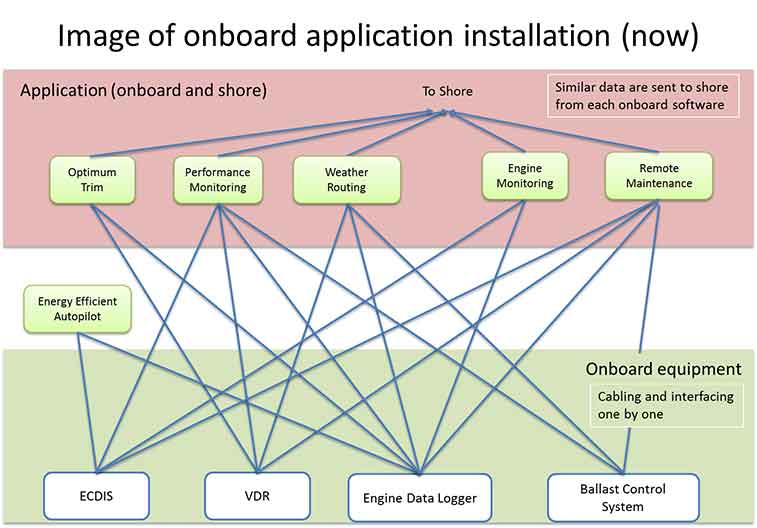
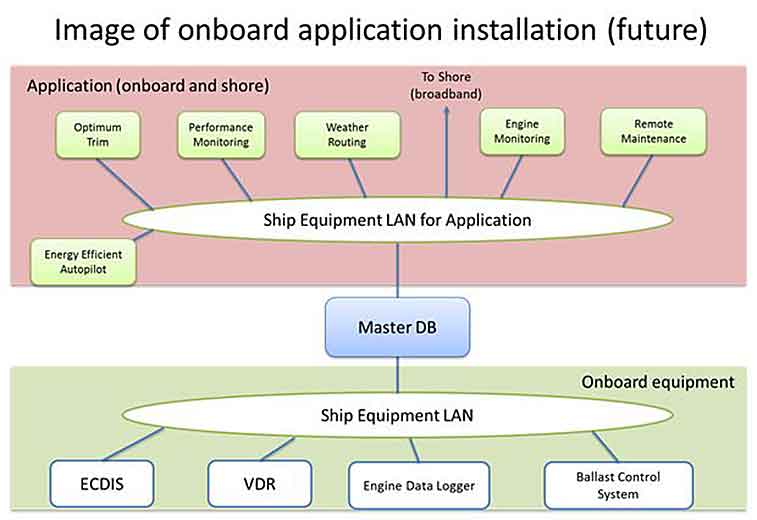
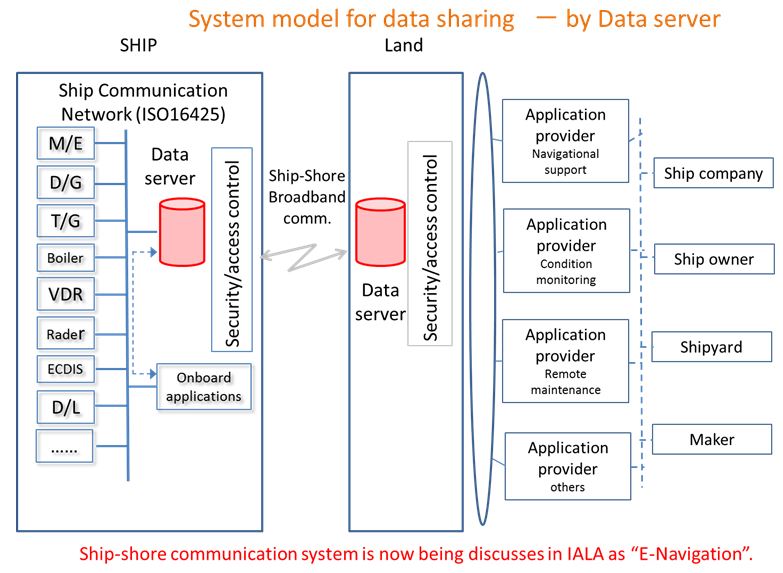
3. Testbed Information
- The type of user group/s involved in the testShipboard users
Shore-based users
SAR users
- Details of e-navigation gap/s considered for the testbed (some examples are given below. For a complete list, please refer to the IMO MSC 91 report):Information/data management
Effective and robust voice communication and data transfer
Systems and equipment
Ship reporting
Traffic monitoring; and/or
Training and familiarization
- The category of e-navigation gap/s considered in the testbedTechnical
Regulatory
Operational and/or
Training
- Details of e-navigation solution/s considered in the testbed (solutions prioritised by IMO are listed below. For a complete list, please refer to the IMO MSC 91 report):S1: Improved, harmonized and user-friendly bridge design
S2: Means for standardized and automated reporting
S3: Improved reliability, resilience and integrity of bridge equipment and navigation information
S4: Integration and presentation of available information in graphical displays received via communication equipment
S9: Improved Communication of VTS Service PortfolioRCO1 :Integration of navigation information and equipment including improved software quality assurance
RCO4 :Automated and standardized ship-shore reporting
RCO6 :Improved shore-based system
- The category of e-navigation solution/s considered in the testbedTechnical
Regulatory
Operational and/or
Training
- Links to similar / relevant testbeds (if any)
None
3.1 About the testbed
In the SSAP Project, two ships are in operation for various tests, which are being carried out to share data on an onboard data server and to send and receive data to and from shore-based application services in a ship-shore communication system.
3.1.1 Testbed – 1
・Ferry “Sunflower Shiretoko” (retro-fit)
・Gross ton :11,400
・Speed :25Knot
・L :190m B :26.4m
・Route : Ooarai (Ibaragi prefecture)~Tomakomai(Hokkaido)
・Installation in Jan 2014
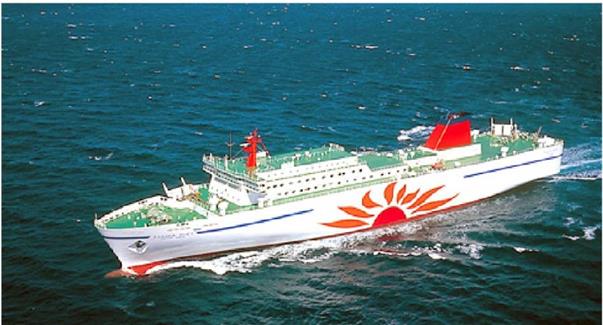
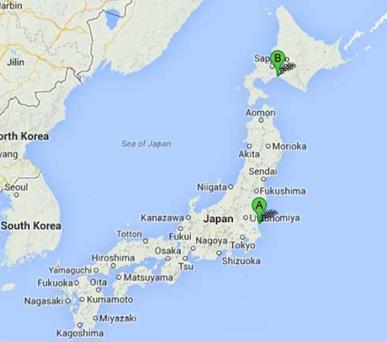
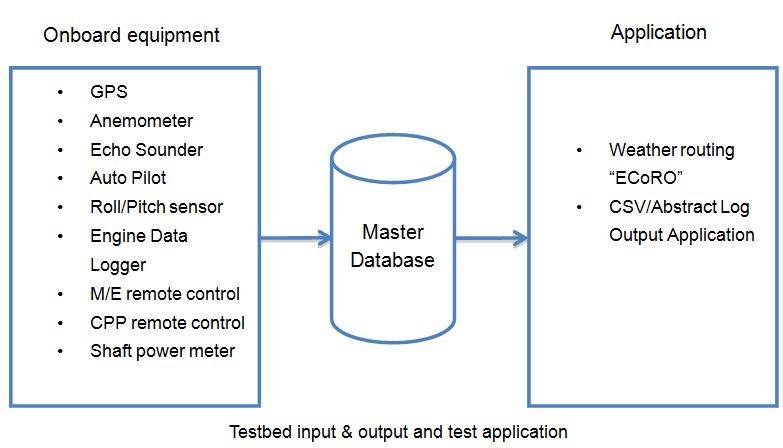
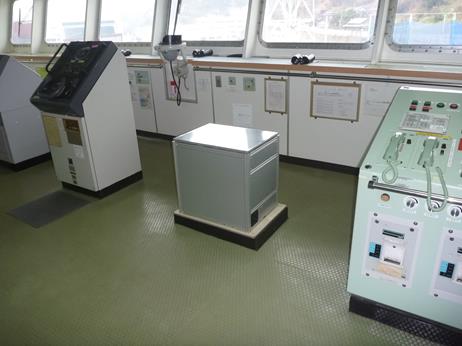
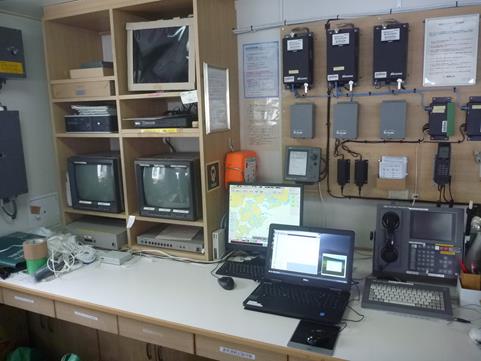
Master database server in a bridge Test application services
3.1.2 Testbed – 2
・Crude-oil Carrier “SHINKYOKUTO MARU” (New building)
・Deadweight :5,500Ton
・L :105m B :16m
・Route: Onahama (Fukushima) – Hirono (Fukushima)
・Installation before sea trial(Ship is in service from April 2014)
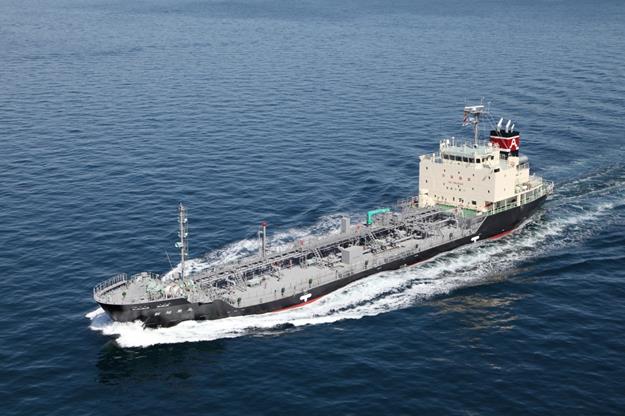
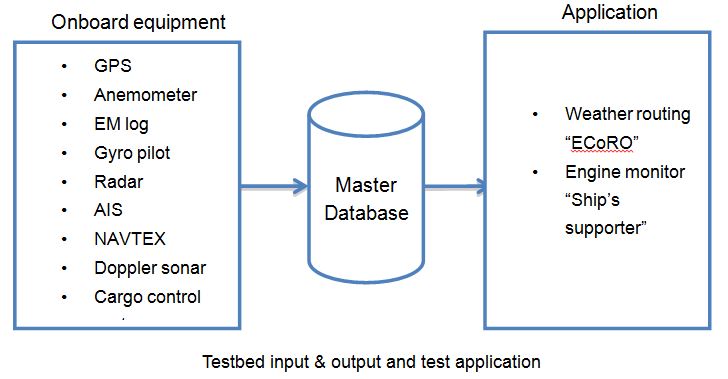
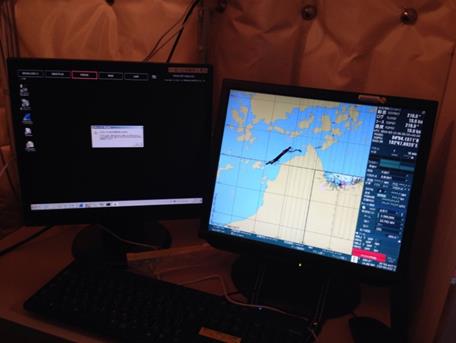
Test application services












